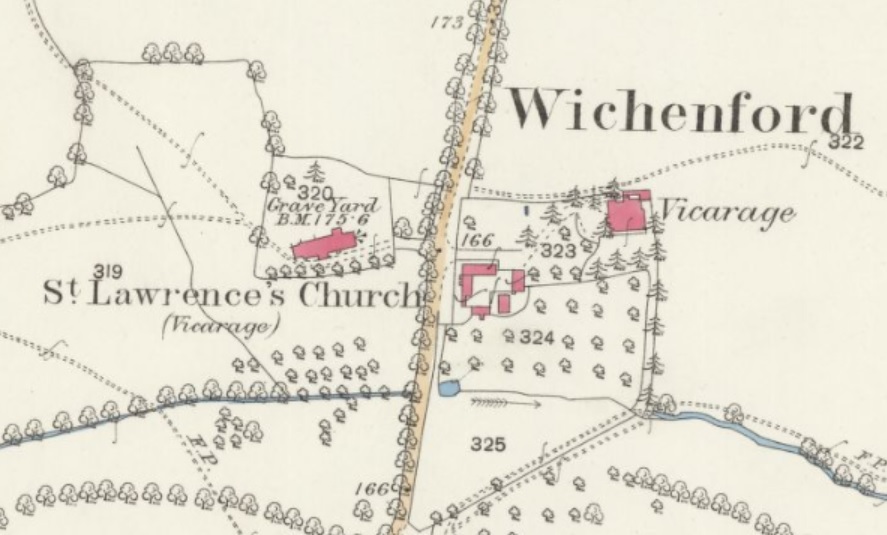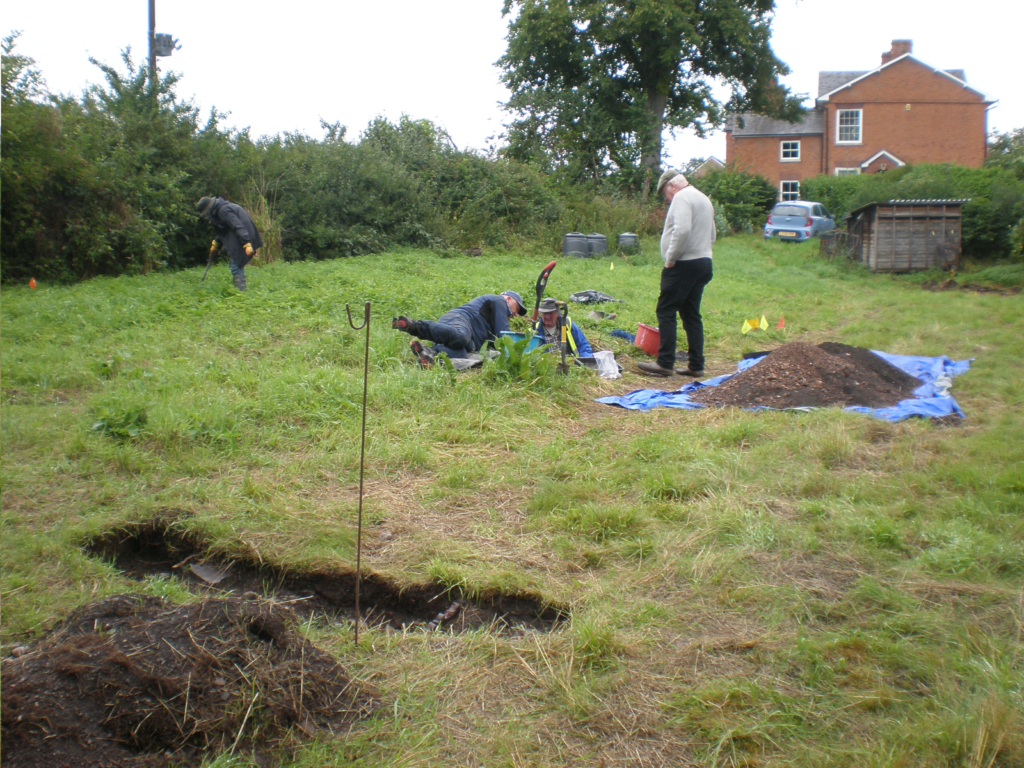This year NWAG spent from July to October excavating the land west of the Old Vicarage at Wichenford in search of a much earlier, known vicarage. We’d previously been digging here as part of the Worcestershire Archaeological Society’s ‘Small Pits, Big Ideas‘ project, and were delighted to come back and continue the investigations!

The existing ‘Old Vicarage’ was built in 1833 (and extended in 1838) on glebe land opposite St Lawrence’s Church. It replaced an earlier vicarage that was located closer to the road, and which may have been built in the 16th or 17th centuries. Archival sources tell us that this building consisted of a hall, a parlour, four chambers, and a kitchen, together with a stable, barn, and cattle shed. By the late 1700s it was considered too dilapidated and costly to repair. Its location is shown on several 18th-century maps, but is drawn rather vaguely. This has made our search for the building much more difficult!

Records show that there were plans to reuse some of the materials from this earlier building when creating the (new) ‘Old Vicarage’ in 1833. Whether or not this actually occurred is unknown, but our team found plenty of building material spread across the site that may have come from previous demolition – some of it dating to the 18th century, and some even later.
So far we’ve excavated six trenches of varying sizes and depths around the field. Most of them have revealed similar things – including compacted layers of brick and lime mortar fragment, and natural clay geology. While we haven’t yet found the earlier vicarage, we’ve found a lot of evidence relating to the Victorian ‘Old Vicarage’!

One interesting feature we uncovered was a straight footpath, which ran from east to west across Trenches 3 and 6. The path was lined with Victorian edging tiles, and could be traced as far as the road. It probably gave easy access for the Vicar, who could cross over the road to the church and preach his Sunday sermons to the local parishioners.


In Trench 4 we found the remains of a large domestic vegetable patch, which contained lots of pottery and other finds.

The site slopes gently from north to south, down to where a thick hedge lines the driveway leading to the present house. Trench 2 was located in the lower, south-eastern part of the field, and we were astonished to find 76 early potsherds in its lowest layers. Interestingly, four sherds from other trenches across the site have been identified as Severn Valley Ware, and must date to the Roman period. It’s amazing to think that, while we’ve been searching for a post-medieval Vicarage, we might have found traces of Roman or even Iron Age settlement!

Now that we’ve finished our digging season for this year, we will be looking more closely at the results and try to make sense of what we found. Hopefully we’ll have some exciting news to share in 2024!
